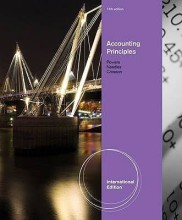Summary: Auditing
- This + 400k other summaries
- A unique study and practice tool
- Never study anything twice again
- Get the grades you hope for
- 100% sure, 100% understanding
Read the summary and the most important questions on Auditing
-
Hoorcollege 1 - Introduction to Auditing and Assurance
This is a preview. There are 3 more flashcards available for chapter 05/02/2021
Show more cards here -
What is an Assurance engagement?
An engagement in which a practitioner/auditor aims to obtain sufficient appropriate (audit) evidence in order to express a conclusion designed to enhance the degree of confidence of the intended users other than the responsible party about the subject matter information. -
What is the objective of an audit of financial statements?
To enhance the degree of confidence of intendedusers in the financial statements. -
How is the objective of an audit of financial statements achieved?
This is achieved by the expression of an opinion by the auditor on whether the financial statements are prepared, in all material respects, in accordance with an applicable financial framework. -
What are the levels of assurance?
- High: 90-95% (in the audit)
- Limited: 50-70% (in the review) -
What are the benefits of reliable information?
- Reduction of risk (estimation error): lower risk premium
- Improvement of (internal) decision making: finding errors, improve internal accounting & decision making
- Reduction of risk (estimation error): lower risk premium
-
Artikel Kausar et al. (2016)
This is a preview. There are 2 more flashcards available for chapter 05/02/2021
Show more cards here -
Why do they study this (relevance)?
Based on prior literature, audits increase the quality and reliability of financial statement disclosures. This is because an audit reduces information asymmetry and cost of capital for a company. The authors of this study argue that the choice to obtain an audit can provide incremental information (about the riskiness of a company) to creditors. They believe that an ordinary audit provides an insight into the future prospects of a company. This is because audits are costly, so it is expected that firm only choose to be audited voluntarily if the benefits outweigh the costs. -
Artikel Raak et al. (2020)
This is a preview. There are 6 more flashcards available for chapter 05/03/2021
Show more cards here -
Which two viewpoint are examined in this study? + toelichting
- Concentration reduces competition: Concentration reflect a lack of competition, reducing audit quality and increasing audit fees.
- Concentration is a necessary response : Concentration helps to achieve scale economies and helps to develop the necessary technology and resources which are needed for complex audits. -
Which segments are distinguished and why?
Small & medium clients are distinguished from large clients, because the effect of concentration on quality and pricing depends on audit complexity (client size). -
Which dimensions of audit market structure are examined ?
- market concentration
- client mobility -
Artikel Gunny & Zhang (2013)
This is a preview. There are 10 more flashcards available for chapter 05/03/2021
Show more cards here -
Which core program areas has the PCAOB?
- Registration: if you're theauditor of a company that issues shares in the US, you (the audit firm) have to register with thePCAOB , otherwise you're not allowed toaudit the financial statements of that company.
-Inspections (key focus)
- Standard Setting:auditing standards
- Enforcement: they can punishauditors
- Higher grades + faster learning
- Never study anything twice
- 100% sure, 100% understanding

































